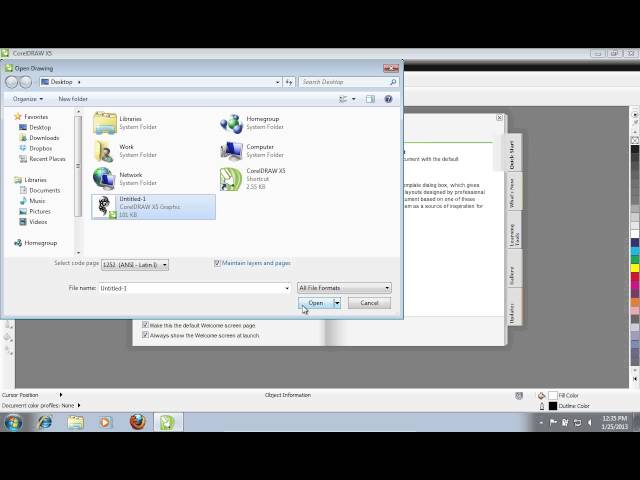Unveiling the Offline Transformation: A Comprehensive Guide on Converting CorelDRAW Files to EPS

Introduction:
CorelDRAW, a stalwart in the graphic design realm, provides designers with a versatile environment for creating stunning visuals. When the need arises to share or collaborate on designs, converting CorelDRAW files to the Encapsulated PostScript (EPS) format is a common requirement. This comprehensive guide will walk you through the intricacies of converting CorelDRAW files to EPS offline, exploring various methods, considerations, and best practices to ensure a seamless and high-quality transformation.
I. Understanding the EPS Format:
- Versatility of EPS:
- EPS is a widely recognized and versatile file format commonly used in graphic design, illustration, and print.
- It encapsulates vector graphics, making it ideal for preserving the quality and scalability of designs.
- Use Cases for EPS:
- EPS files are favored for printing, especially in the context of commercial printing and professional publications.
- Converting CorelDRAW files to EPS ensures compatibility across different design software and print platforms.
II. Why Convert CorelDRAW to EPS Offline:
- Offline Conversion Control:
- Offline conversion offers designers greater control over the transformation process.
- It allows for manual adjustments, quality checks, and customization based on specific project requirements.
- Independent of Internet Connectivity:
- Offline conversion eliminates the need for a continuous internet connection, providing flexibility and accessibility in various working environments.
III. Methods for Offline Conversion:
- Utilizing CorelDRAW’s Export Options:
- Open the CorelDRAW file you wish to convert.
- Navigate to the “File” menu, select “Export,” and choose “EPS” as the export format.
- Adjust settings such as color mode, resolution, and font embedding as needed.
- Save the file to your desired location.
- PostScript Printer Driver Method:
- Install a PostScript printer driver on your computer.
- Open the CorelDRAW file and select “Print.”
- Choose the installed PostScript printer as the output device.
- In the printer properties, select “EPS” as the output format.
- Print the file, and it will be saved as an EPS file.
- Exporting to PDF First:
- Export the CorelDRAW file to PDF using the “File” menu and selecting “Export.”
- Use a PDF to EPS converter tool, either offline or online, to transform the PDF into EPS format.
IV. Considerations During Conversion:
- Resolution and Image Quality:
- Adjust the resolution settings during the EPS export to ensure optimal image quality.
- Be mindful of the balance between file size and image resolution based on the intended use.
- Font Compatibility:
- Embed fonts during the export process to ensure that text elements display correctly in the EPS file.
- Verify font compatibility between CorelDRAW and the target application or printer.
- Color Modes:
- Confirm that the color mode selected during export aligns with the project requirements.
- RGB or CMYK color modes should be chosen based on the intended use, such as digital or print.
V. Step-by-Step Offline Conversion Process:
- Open CorelDRAW:
- Launch CorelDRAW on your computer.
- Open the File:
- Open the CorelDRAW file that you want to convert to EPS.
- Navigate to Export:
- Access the “File” menu and select “Export” or “Print,” depending on the chosen method.
- Choose EPS Format:
- Select “EPS” as the export format.
- Adjust Settings:
- Customize settings such as resolution, font embedding, and color mode based on project requirements.
- Save the EPS File:
- Save the converted file to your desired location, specifying the filename and ensuring the “.eps” extension.
- Confirm Compatibility:
- Check the compatibility of the EPS file with the intended software or printer to ensure seamless integration.
VI. Troubleshooting and Tips:
- Post-Conversion Review:
- After the conversion, review the EPS file to confirm that all elements are accurately preserved.
- Check for any anomalies in text, images, or colors.
- Software Version Compatibility:
- Ensure that the CorelDRAW version used for conversion is compatible with the target software or printer.
- Stay informed about updates to address any compatibility issues.
- Preserving Layers and Object Properties:
- Complex designs with layers and intricate object properties may require careful consideration during conversion.
- Confirm that the structure of the CorelDRAW file is retained in the EPS format.
VII. Leveraging EPS Files in Design Workflows:
- Integrating into Print Projects:
- EPS files are widely compatible with print workflows, making them suitable for commercial printing and publication design.
- Integrate EPS files seamlessly into projects for brochures, posters, or other print collateral.
- Cross-Software Collaboration:
- Share EPS files with collaborators using different design software, ensuring compatibility and ease of collaboration.
- Maintain design integrity across platforms and applications.
Conclusion:
In conclusion, converting CorelDRAW files to EPS offline is a valuable skill for designers seeking flexibility and control over the transformation process. Whether for print projects, cross-software collaboration, or design compatibility, EPS files play a crucial role in the graphic design landscape. By following the step-by-step process, considering key factors during conversion, and leveraging offline methods, designers can seamlessly integrate CorelDRAW creations into various design workflows with precision and efficiency.







